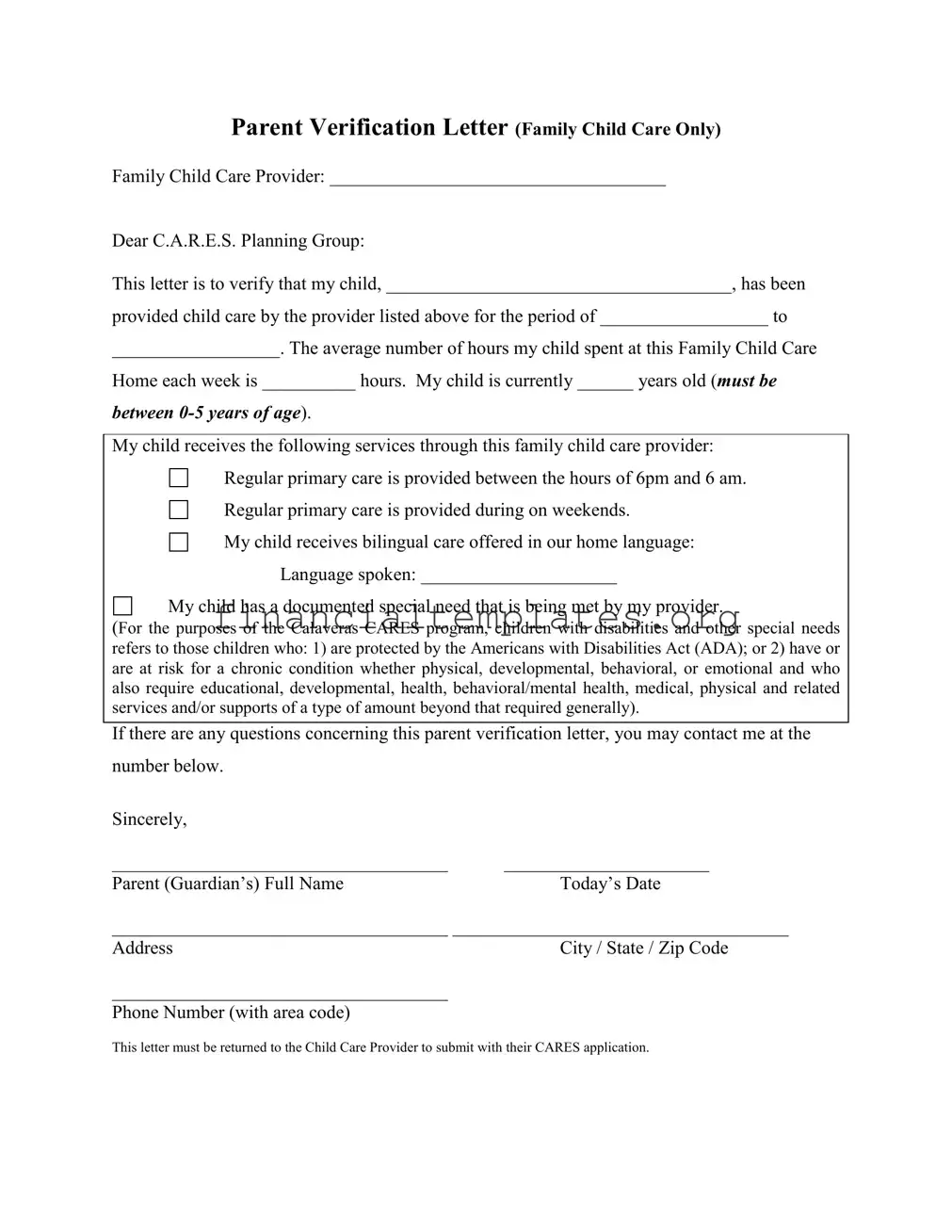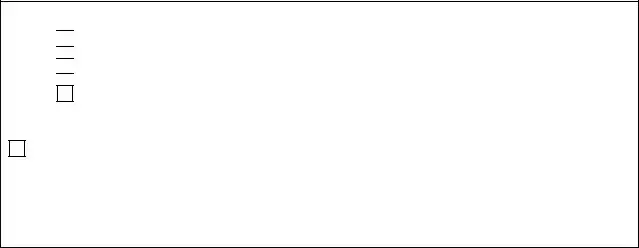The Child Care Payment Letter form, designed for family child care documentation, has similarities with several other documents used across different fields. Each of these documents serves a specific role in verifying, requesting, or reporting information in a similarly structured format, albeit for varied purposes.
One such document is the Employment Verification Letter. This letter confirms an individual's employment status, salary, and tenure at a company. Like the Child Care Payment Letter, it serves as a proof document, ensuring that a third party, such as a bank for loan approval or another employer, can verify the claims made by an individual about their employment.
Another parallel can be drawn with the Rent Confirmation Letter. Often required by lending institutions, this letter from a landlord confirms the residence and rental payment history of a tenant. Similar to the Child Care Payment Letter, it verifies a continuous service relationship, showcasing the tenant’s reliability and consistency in making payments.
The Medical Records Release Form is akin to the Child Care Payment Letter through its function of sharing specific, confidential information with authorized parties. It allows healthcare providers to share a patient’s medical history with another doctor or organization, mirroring the child care letter's purpose of sharing care provision information with a program or authority.
Furthermore, the Child Support Agreement Letter bears resemblance, as it involves documentation regarding the care and financial support for a child, albeit in a legal agreement between parents or guardians. It details the terms under which one parent will contribute financially, similar to how the Child Care Payment Letter outlines the services received and hours of care provided.
The Scholarship Application Letter also shares similarities. While it serves a different purpose — requesting financial support for education — it is alike in structure, detailing the applicant’s qualifications and the specifics of the request, akin to how the Child Care Payment Letter details the services provided and the child’s needs.
Then there's the Loan Application Letter, which, similar to the child care letter, requires detailed personal and financial information to persuade the decision-making body (in this case, a bank or financial institution) to approve the request based on the veracity and details of the provided information.
The Service Complaint Letter is related through its formal communication of service-related concerns or issues, requiring action or response from the service provider. This is akin to how the Child Care Payment Letter may be used to confirm the quality and specifics of child care services provided.
Another document is the Special Education Needs (SEN) Statement, which delineates the specific educational requirements of a child with special needs. It’s similar in its focus on detailing particular care needs and services, as the Child Care Payment Letter does for children under special care provisions.
The Insurance Claim Form bears resemblance in its function of requesting specific benefits or compensation based on documented circumstances or events, much like how the child care letter may support claims for child care benefits under certain programs or provisions.
Lastly, the Parental Leave Request Letter is akin to the Child Care Payment Letter form by involving child care matters, specifically requesting leave from work for child care purposes. It necessitates the detailing of personal circumstances and the importance of the requested leave, reflecting how crucial the detailed information in the Child Care Payment Letter is for its specific purposes.



 !#% **
!#% **
 !%&
!%&